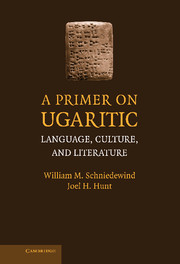4 - Administrative Texts (KTU 4)
Published online by Cambridge University Press: 05 June 2012
Summary
Most of the alphabetic cuneiform texts from Ugarit are administrative and economic texts. The administrative texts, which are collected together under KTU 4, number more than 700 and comprise about 70% of the corpus of texts. Many more administrative texts are fragmentary, unreadable, or unpublished. These texts are usually short and the tablets were usually unbaked, suggesting that they were ephemeral records kept in the royal archive. They date to between the thirteenth century BCE and 1180 BCE, and were excavated almost exclusively in the royal palace. To be sure, the administrative texts have received little attention compared to the literary texts, but they nevertheless can provide rich insight into the politics, administration, economy, and social structure of the ancient kingdom of Ugarit.
There are two classes of people mentioned in these texts: “the sons of Ugarit,” which included the villagers and general citizenry, and “the servants of the king,” which included the royal officials (in charge of taxes, conscription, and forced labor) and professional classes (e.g., craftsmen and priestly groups). The types of administrative texts can be loosely classified as follows: lists of villages, lists and activities of the economic administrative centers (called gt), texts dealing with the “sons of the king” (bnš mlk), registers of taxes, land ownership and military conscription, texts concerning ships and maritime activities, lists of palace personnel, texts concerning royal storage facilities and contents, genealogical texts, and texts concerning cultic personnel and activities.
- Type
- Chapter
- Information
- A Primer on UgariticLanguage, Culture and Literature, pp. 92 - 96Publisher: Cambridge University PressPrint publication year: 2007



